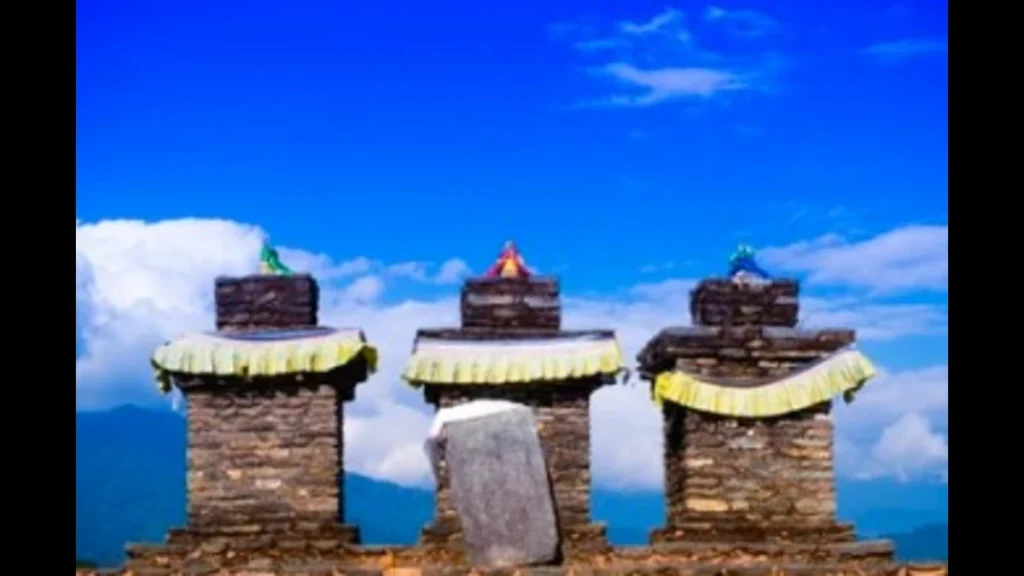West Sikkim: SIKKIM
“Explore West Sikkim District, a Himalayan paradise where breathtaking landscapes meet vibrant cultural heritage. Discover lush valleys, sacred lakes, and ancient monasteries in this tranquil region of India.”

Nestled in the lap of the Himalayas, West Sikkim District is a gem in the northeastern part of India. With its breathtaking landscapes, rich cultural heritage, and serene atmosphere, this district offers a unique and memorable experience for travelers.
Geography and Climate
West Sikkim is blessed with diverse topography, ranging from lush green valleys to rugged mountain terrain. The district is home to several prominent peaks, including the majestic Kanchenjunga, the third-highest mountain in the world. Its elevation varies from about 300 meters to over 8,500 meters above sea level, making it a haven for trekkers and adventure enthusiasts.
The climate here is temperate, with pleasant summers and cold winters. The monsoon season, from June to September, brings heavy rainfall, enhancing the region’s natural beauty. During the winter months, the district transforms into a snowy wonderland, making it an ideal destination for those seeking a unique winter experience.
Natural Beauty
West Sikkim boasts an array of natural wonders that will leave you in awe. The lush green forests, pristine rivers, and serene lakes make it a paradise for nature lovers. The Khecheopalri Lake, also known as the “Wishing Lake,” is a sacred lake surrounded by dense forests, and it’s believed that wishes made here come true. Pelling, the district’s headquarters, offers panoramic views of the Himalayas, especially during sunrise and sunset.
Yuksum, a historic town in West Sikkim, is the gateway to several trekking trails, including the famous Goechala trek that offers breathtaking views of Kanchenjunga and other peaks. Yuksom is also known for its tranquil atmosphere and the Dubdi Monastery, one of the oldest in Sikkim.
Cultural Heritage
In addition to its natural beauty, West Sikkim is rich in cultural heritage. The district is inhabited by various indigenous communities, including the Lepchas, Bhutias, and Nepalese, each with its unique traditions and festivals. The vibrant culture is reflected in the colorful festivals celebrated throughout the year, such as Losar, Dashain, and Tihar.
One of the prominent cultural attractions is the Pemayangtse Monastery, perched on a hilltop and adorned with intricate religious artwork. It’s a place of spiritual significance for Buddhists and a testament to the region’s rich religious history.
Local Cuisine
No visit to West Sikkim is complete without savoring the local cuisine. The district offers a variety of traditional dishes, including momo (dumplings), thukpa (noodle soup), and gundruk (fermented leafy greens). Don’t forget to try the local Sikkimese beer, tongba, served in a unique wooden container.
Conclusion
West Sikkim District is a destination that caters to both nature enthusiasts and cultural aficionados. Whether you seek adventure in the Himalayan wilderness or wish to immerse yourself in the rich heritage of this region, West Sikkim offers a memorable experience. The district’s natural beauty, diverse landscapes, and warm-hearted people make it a must-visit destination for anyone looking to explore the hidden treasures of the Himalayas. Come, discover West Sikkim, where natural beauty meets cultural heritage, and create memories that will last a lifetime.
Famous Places in West Sikkim District
West Sikkim District is renowned for its scenic beauty and cultural significance. Here are some famous places that you should not miss when visiting this enchanting region:
Pelling: Pelling is the district headquarters and offers panoramic views of the snow-capped Himalayan peaks, including Kanchenjunga. It’s a popular destination for trekkers and nature enthusiasts.
Khecheopalri Lake: Also known as the “Wishing Lake,” this sacred lake is surrounded by dense forests and is believed to fulfill wishes. It’s a serene and spiritually significant spot.
Yuksom: The historic town of Yuksom is the gateway to many trekking trails, including the famous Goechala trek. It’s also known for its Dubdi Monastery, one of Sikkim’s oldest monasteries.
Pemayangtse Monastery: Perched on a hilltop, this monastery is a marvel of religious architecture and art. It’s a place of spiritual significance and offers a glimpse into the rich Buddhist heritage of the region.
Rabdentse Ruins: Located near Pelling, these ruins were once the second capital of the Kingdom of Sikkim. Exploring this archaeological site provides insights into the region’s history.
Singshore Bridge: This suspension bridge is one of the highest in Asia and offers breathtaking views of the lush valley below. It’s a thrilling experience for adventure seekers.
Tashiding Monastery: Nestled on a hilltop, Tashiding Monastery is another significant religious site. It’s known for its serene ambiance and picturesque surroundings.
Rimbi Waterfalls: These picturesque waterfalls are a popular stop for travelers, especially during the monsoon season when they are in full flow.
Sewaro Rock Garden: A beautifully landscaped garden with rock formations and waterfalls, this is an ideal spot for a peaceful picnic.
Changey Waterfall: Located near Pelling, this waterfall is a hidden gem in the forested hills, offering a tranquil escape from the hustle and bustle of city life.
Varsey Rhododendron Sanctuary: If you visit during the spring season, this sanctuary is a riot of colors with its blooming rhododendron flowers. It’s a paradise for nature photographers.
Khangchendzonga National Park: A UNESCO World Heritage Site, this park is home to diverse flora and fauna, including the elusive snow leopard. It’s a must-visit for wildlife enthusiasts.
These famous places in West Sikkim District offer a blend of natural beauty, spirituality, and adventure, making it a captivating destination for travelers looking to explore the treasures of the Himalayas.
Read More :-
